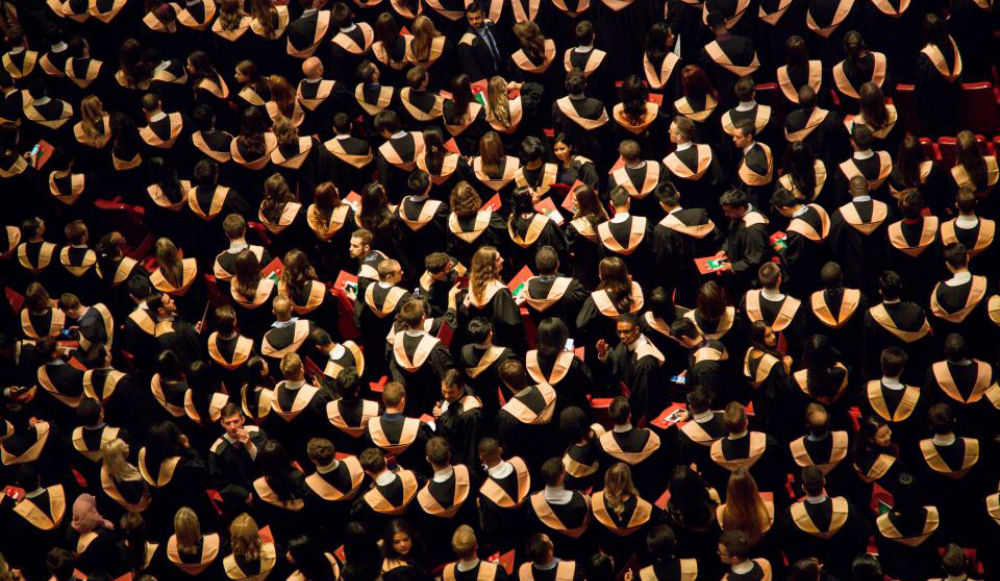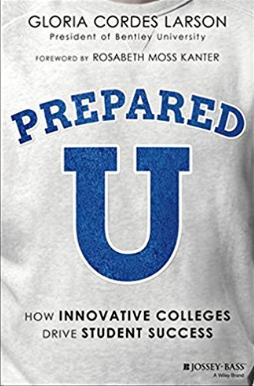How Innovative Colleges Drive Student Success

Preparing graduates for the innovation economy requires a shift in our thinking about professional skills and attitudes. It means thinking deeply about how changes in technology, business models, and even culture create opportunities in every industry at every level. It means training, encouraging, celebrating, and demanding that kind of thinking and risking failure as part of learning.
Assuming a business is committed to innovation, how does it enable employees to explore and exploit original ideas?
The fusion of left-brain and right-brain thinking is happening all over the innovation economy in companies large and small:
- Human resources departments and recruiters are paying attention. At many innovative companies, the hiring process includes assessing a candidate’s emotional intelligence and their ability to empathize with customers. Left brain: technical skills; right brain: emotional intelligence.
- Today’s most in-demand skill sets are notable for their versatility, according to labor market analytics firm Burning Glass. For example, business development requires both strategy and relationship-building skills. Left brain: turning data analysis into strategy; right brain: relationship-building, empathy.
- Dropbox and Box.com, starting as online storage businesses, created drop-dead simple ways to manage, collaborate on, and share documents and files. Then, instead of offering a tiny bit of storage for free, they offered immense storage inexpensively. Left brain: keeping data safe and available; right brain: simple and elegant interface design.
- Netflix, in the words of Fast Company, “turned the TV network into an app.” Netflix produced its own shows and then premiered entire seasons at once, popularizing the recreation we call “binge watching.” Left brain: broadband video delivery; right brain: enabling a fun, new experience.
- Charles Best of DonorsChoose.org upended traditional fundraising for schools by allowing donors to pick individual classes or projects to support, changing the experience of supporting public education by making each donation personal. Left brain: managing dollars donated; right brain: creating one-to-one relationships between donors and recipients.
- A host of breakout retailers — Starbucks, Target, Michael Kors, Warby Parker — invented a category called “affordable luxury.” Left brain: spending money sensibly; right brain: satisfying a desire for beauty, style, good taste, and high quality.
Recently, Bentley University leveraged labor market analytics from Burning Glass to learn more about today’s jobs. When we analyzed the content of thousands of job descriptions, we learned that business is moving into the era of the “hybrid job” — and the “hybrid employee.” The successful employee of tomorrow will combine traditional soft skills like communication and collaboration with those hard, technical skills that used to belong to a select tech-savvy group.

One more factor is driving business’s need for a new kind of graduate: workplaces across America will soon be staffed by baby boomers, Generation X-ers, millennials, and Generation Z-ers. Four generations will be working side by side for the first time since most Americans left the family farm behind. This is going to be interesting. The cohort currently taking over the new workplace is the millennial generation. There are 72 million of them in the United States, and by 2025, they will make up 75 percent of the American workforce. By sheer force of numbers, millennials will have the same impact on the coming decades as the baby boomers had on the decades between 1960 and 2000.
Generation Z has much in common with millennials, but you might say they’re millennials on steroids. They were children when 9/11 and the Great Recession happened, so they have never known a time of what other generations would call “peace and prosperity.” They are the most diverse generation in American history, and on questions about diversity and inclusion, they often respond by asking, “What’s the big deal?” One of the most powerful forces shaping their lives is social media. They use Facebook, Twitter, Instagram, Snapchat, Slack, Periscope, and all the rest as primary learning and communications platforms. That has big implications for businesses and educators.
The millennials and Gen. Z-ers are generations that blur lines. They don’t see social life and free time as totally separate from work and career. These things are all part of one world in their minds. As these generations become bigger and bigger portions of the workforce, those of us in higher education and business have to understand their ways.
Excerpted with permission of the publisher, Wiley, fromPreparedU by Gloria Cordes Larson. Copyright (c) 2017 by Gloria Cordes Larson. All rights reserved. This book is available wherever books and ebooks are sold.
Gloria Cordes Larson is President of Bentley University. She is the first woman to serve in this post.

